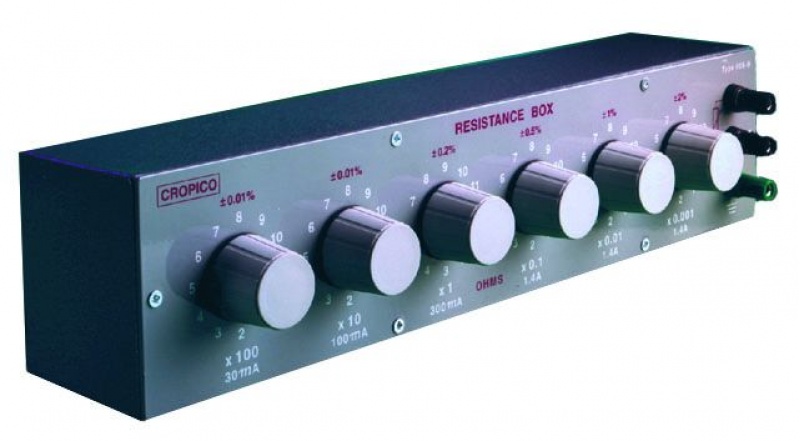
In the field of electrical engineering and power distribution, reliability, safety, and efficiency are critical. The RTD box, also known as a Ring Main Unit (RMU), plays a pivotal role in ensuring these aspects within medium-voltage networks. This article explores the features, functions, benefits, and applications of RTD boxes, providing a comprehensive understanding of their significance in modern electrical systems.
What is an RTD Box?
An RTD box or Ring Main Unit (RMU) is an electrical distribution device used to control, protect, and isolate electrical equipment within medium-voltage networks. These units are crucial for maintaining the continuous and safe operation of electrical systems in various environments, including residential areas, commercial buildings, and industrial plants.
Key Components and Structure
An RTD box typically includes several essential components:
1. Load Break Switches:
These switches are designed to connect or disconnect electrical circuits under load conditions, allowing for safe maintenance or fault isolation.
2. Circuit Breakers:
Circuit breakers protect the network by interrupting current flow in case of overloads or short circuits, preventing equipment damage and reducing fire risk.
3. Fuses:
Fuses act as safety devices, breaking the connection if current exceeds safe levels, adding an extra layer of protection against overcurrent.
4. Isolators:
Isolators safely disconnect sections of the network for maintenance purposes, ensuring that equipment is not powered during repairs.
5. Busbars:
Busbars distribute power to multiple circuits within the RTD box, ensuring efficient power distribution with minimal losses.
6. Protection Relays:
These relays monitor the network for abnormal conditions and trigger corrective actions, such as opening a circuit breaker, to prevent system damage.
7. Control Panel:
The control panel provides a user-friendly interface for operating and monitoring the RTD box, housing various controls and indicators.
Functions of an RTD Box
RTD boxes serve several critical functions in electrical distribution systems:
1. Power Distribution:
They efficiently distribute electrical power from a single source to multiple circuits, ensuring all parts of the network receive the necessary power.
2. Fault Isolation:
RTD boxes can isolate faults, such as short circuits or overloads, to prevent widespread network damage and maintain system integrity.
3. Load Management:
These units facilitate load management by allowing operators to connect or disconnect loads as needed, helping balance the network and prevent overloading.
4. Maintenance Facilitation:
By isolating network sections, RTD boxes enable maintenance and repairs without system-wide shutdowns, enhancing reliability and safety.
Benefits of Using RTD Boxes
The use of RTD boxes provides numerous advantages:
1. Enhanced Safety:
RTD boxes offer robust protection against electrical faults, reducing equipment damage and minimizing electrical hazards through components like circuit breakers, fuses, and relays.
2. Improved Reliability:
By isolating faults and enabling maintenance without complete shutdowns, RTD boxes ensure a continuous power supply to critical loads, minimizing downtime.
3. Efficient Power Distribution:
These units optimize power distribution, minimizing losses and ensuring efficient delivery of electricity across the network.
4. Flexibility and Scalability:
RTD boxes are flexible in design and can be scaled to meet changing power demands, making them suitable for various applications from residential to industrial settings.
5. Ease of Maintenance:
Their modular design allows easy access to components, simplifying maintenance and repairs, reducing downtime, and lowering maintenance costs.
Applications of RTD Boxes
RTD boxes are used in a wide range of applications:
1. Residential Areas:
In residential neighborhoods, RTD boxes ensure a reliable and safe electricity supply to homes, protecting the network from faults and enabling efficient power distribution.
2. Commercial Buildings:
Commercial establishments like office complexes and malls rely on RTD boxes to manage their electrical systems, ensuring the continuous operation of essential services.
3. Industrial Plants:
Industrial facilities require robust electrical distribution systems to support operations. RTD boxes provide the necessary protection, fault isolation, and load management to ensure uninterrupted power supply.
4. Infrastructure Projects:
Projects such as transportation networks and public utilities use RTD boxes to manage their electrical systems, ensuring reliable operation of infrastructure and delivery of essential services.
5. Renewable Energy Installations:
In renewable energy projects like solar and wind farms, RTD boxes manage power distribution, integrating renewable sources into the grid and ensuring reliable delivery to consumers.
Future Trends and Innovations
As technology advances, RTD boxes continue to evolve:
1. Smart Grids:
RTD boxes are being integrated into smart grids, which use advanced communication and control technologies to optimize electricity distribution and consumption.
2. IoT Integration:
With the Internet of Things (IoT), RTD boxes can provide real-time data on system performance, enabling predictive maintenance, fault detection, and optimization of power distribution.
3. Renewable Energy Integration:
As renewable energy adoption increases, RTD boxes are being designed to handle the integration of renewable sources, ensuring grid stability and optimizing resource use.
Conclusion
RTD boxes are indispensable in modern electrical distribution systems, providing essential functions like power distribution, fault isolation, and load management. Their use enhances safety, reliability, and efficiency across various sectors, from residential to industrial applications. As technology evolves, RTD boxes will continue to adapt, incorporating smart grid capabilities, IoT integration, and support for renewable energy, ensuring their continued relevance and importance in the future of electrical engineering.

